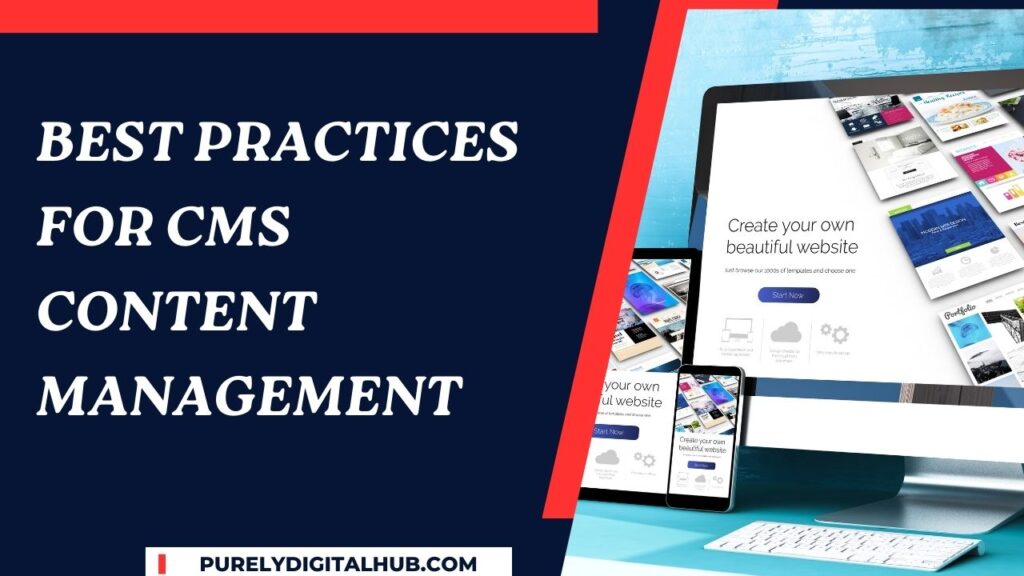A Content Management System (CMS) is a powerful tool for creating, managing, and organizing digital content. To fully leverage its capabilities, businesses need to adopt best practices that ensure efficiency, consistency, and scalability. Proper CMS content management not only improves user experience but also boosts SEO performance and streamlines workflows.
Understanding the Role of a CMS in Content Management
A CMS simplifies content creation and distribution by allowing non-technical users to manage websites without needing extensive coding knowledge. Platforms like WordPress, Drupal, and Joomla enable businesses to publish and update content efficiently.
Key Benefits of Using a CMS:
- Ease of Use: Intuitive interfaces make managing content accessible.
- Scalability: Suitable for both small blogs and enterprise websites.
- SEO Capabilities: Built-in tools help optimize content for search engines.
Best Practices for Effective CMS Content Management
1. Define a Clear Content Strategy
Having a clear content strategy ensures your CMS serves your business goals effectively. Identify:
- Target Audience: Understand who you’re creating content for.
- Content Goals: Define the purpose of your content (e.g., engagement, conversions).
- Content Types: Determine the formats you’ll use (blogs, videos, case studies).
2. Maintain a Consistent Content Structure
Consistency in your content structure ensures a uniform experience for users. Use predefined templates and guidelines to maintain this consistency.
| Element | Best Practice |
|---|---|
| Page Layout | Use reusable templates for uniformity |
| Heading Tags (H1, H2) | Follow a hierarchy for SEO |
| Media Usage | Standardize image sizes and formats |
3. Optimize Content for SEO
Ensure that all published content adheres to SEO best practices to maximize visibility in search engines.
Tips for CMS SEO Optimization:
- Use relevant keywords in titles, meta descriptions, and body text.
- Optimize images with alt tags and appropriate file names.
- Ensure URLs are short, descriptive, and keyword-rich.
4. Implement Version Control and Backup Systems
Version control allows you to track changes and revert to previous versions if needed. Regular backups protect your content from data loss.
| Tool | Purpose |
|---|---|
| Version Control | Track content updates |
| Backup System | Prevent data loss |
5. Enable User Roles and Permissions
Assign specific roles and permissions to team members based on their responsibilities. This prevents unauthorized access and ensures accountability.
| Role | Responsibility |
|---|---|
| Content Creator | Draft and submit content |
| Editor | Review and approve content |
| Admin | Oversee overall CMS management |
6. Use Plugins and Add-Ons Wisely
Plugins and add-ons can extend your CMS’s functionality, but using too many can slow down your website. Choose tools that:
- Address specific needs (e.g., SEO, analytics).
- Are regularly updated and secure.
- Come from reputable developers.
7. Ensure Mobile-Friendliness
With mobile traffic dominating the web, optimizing your content for mobile users is essential. Use responsive design to ensure your site performs well on all devices.
| Metric | Why It Matters |
|---|---|
| Mobile Responsiveness | Enhances user experience |
| Page Load Speed | Improves SEO and engagement |
8. Regularly Audit and Update Content
Conduct content audits to identify outdated or underperforming pages. Refresh content to keep it relevant and aligned with your current goals.
Steps for a Content Audit:
- Analyze performance metrics like traffic and engagement.
- Identify pages that need updates or deletion.
- Optimize for current SEO trends.
9. Monitor Performance Metrics
Track your content’s performance using analytics tools integrated into your CMS or third-party services like Google Analytics. Monitor:
- Traffic sources.
- User engagement metrics (e.g., time on page, bounce rate).
- Conversion rates.
10. Focus on Security
CMS platforms are common targets for cyberattacks. Strengthen your CMS security by:
- Keeping the CMS and plugins up to date.
- Using strong passwords and two-factor authentication.
- Installing security plugins to monitor for vulnerabilities.
| Security Measure | Benefit |
|---|---|
| Regular Updates | Fixes bugs and vulnerabilities |
| Strong Password Policies | Prevents unauthorized access |
Common Mistakes to Avoid in CMS Content Management
- Ignoring Regular Updates: Outdated software can expose your site to security risks.
- Overloading with Plugins: Too many plugins can slow down your site and cause compatibility issues.
- Neglecting User Experience: Poor navigation and layout can deter users, even with great content.
Future Trends in CMS Content Management
- AI-Powered Tools: AI will enhance content personalization and automate routine tasks.
- Voice Search Optimization: As voice search grows, content strategies will shift to focus on conversational keywords.
- Headless CMS Adoption: Headless CMSs offer flexibility by separating content from the presentation layer, making them ideal for omnichannel delivery.
Conclusion
Efficient CMS content management is essential for maintaining a professional and effective online presence. By adopting these best practices, businesses can streamline workflows, enhance user experience, and improve their website’s SEO performance. As technology evolves, staying updated with the latest trends and tools will ensure your CMS remains a valuable asset in achieving your content goals.
